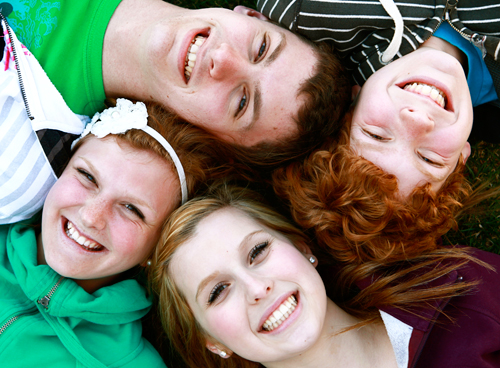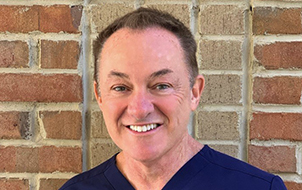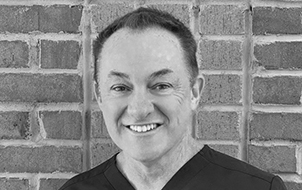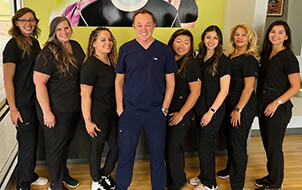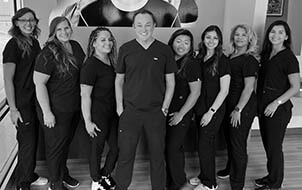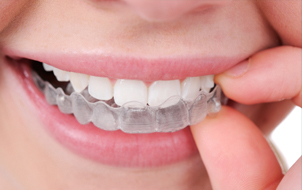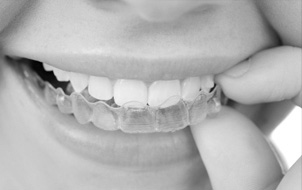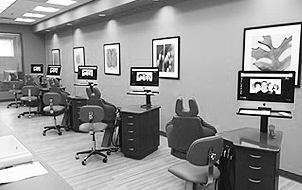Common Orthodontic Problems
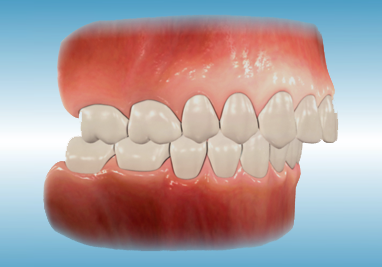
Class II
Class II problems represent an abnormal bite relationship in which the upper jaw and teeth are located in front of the lower jaw and teeth. Class II patients usually exhibit a convex facial profile with a recessed chin. In most cases, this relationship is due to inherited characteristics.
A skeletal Class II problem occurs when the upper back molars are forward of the lower back molars. This gives the patient the appearance of having a recessed lower jaw, a protruding upper jaw, or both.
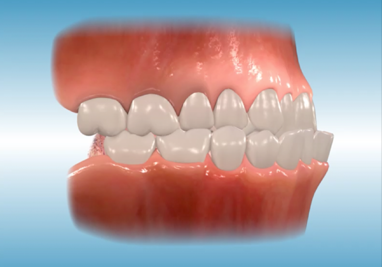
Class III
Class III problems are also primarily genetic in origin. In this instance, the lower jaw and teeth are positioned in front of the upper jaw and teeth. The lower jaw may appear to be excessively large, but in many cases the lack of upper jaw development is at fault. Several treatment options are available to correct a Class III problem.
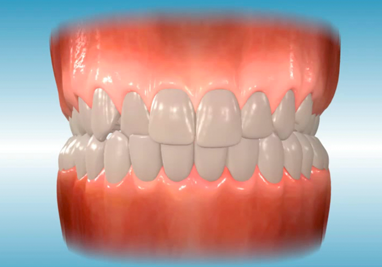
Crossbite
A posterior crossbite will usually result from a narrow upper jaw or abnormally wide lower jaw. A narrow upper jaw will often force a patient to move the lower jaw forward or to the side when closing into a stable bite. When closed into this accommodating position, the lower teeth are located outside the upper teeth.
A posterior crossbite can involve one side of the jaw, known as a unilateral crossbite, or both sides of the jaw, known as a bilateral crossbite.
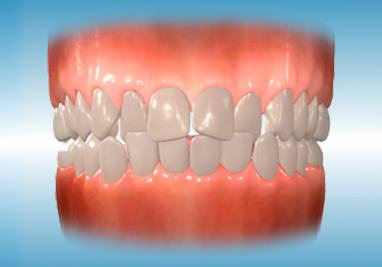
Crowding
Crowding of the teeth is probably the most common orthodontic problem. Although many factors contribute to dental crowding, this problem typically stems from a discrepancy between the space in each jaw and the size of the teeth. Dr Mibab follows conservative treatment plans, avoiding extraction of permanent teeth whenever possible. Often a palatal expander appliance can help increase the room for crowded teeth.
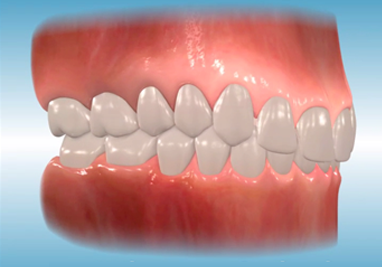
Deep Bite
A deep bite is excessive vertical overlapping of the front teeth and is generally found in association with a discrepancy between the length of the upper and lower jaws. It usually results in excessive eruption of the upper or lower incisors, or both. The lower front teeth often bite into the roof of the mouth.
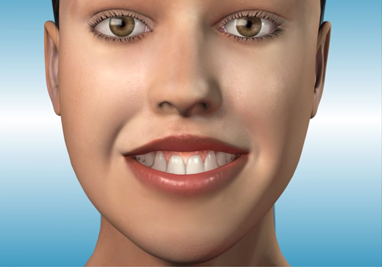
Excessive Gingival Display
Also known as a gummy smile, this orthodontic problem gives the appearance of excessive exposed gums on the upper arch. There are several treatment options for this problem. It may simply involve lifting the upper front teeth using braces to help reduce the excessive gum display. In more severe cases with a jaw discrepancy, surgery may be necessary to lift the upper jaw to help reduce the excessive exposure of the upper gum tissue.
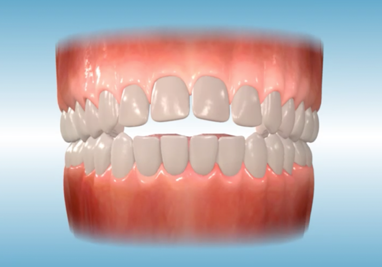
Openbite
An openbite can occur with the front teeth, known as an anterior openbite or with the back teeth, referred to as a posterior openbite. An anterior openbite is the lack of vertical overlap of the front teeth and can usually be traced to jaw disharmony or habits such as thumb sucking or the thrusting of the tongue against the front teeth. A posterior openbite is a problem in which the back teeth do not meet vertically, which keeps the jaw from functioning properly.
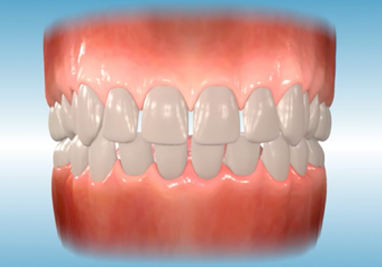
Spacing
Spaces between teeth are another common problem associated with the need for orthodontic care. Like crowding, spacing may be related to a tooth-to-jaw size disharmony. Spacing may occur between the front and the back teeth. Tooth size discrepancies, such as smaller teeth or abnormally shaped teeth, or tongue thrust habits can also create abnormal spacing.
Class II

Class II problems represent an abnormal bite relationship in which the upper jaw and teeth are located in front of the lower jaw and teeth. Class II patients usually exhibit a convex facial profile with a recessed chin. In most cases, this relationship is due to inherited characteristics.
A skeletal Class II problem occurs when the upper back molars are forward of the lower back molars. This gives the patient the appearance of having a recessed lower jaw, a protruding upper jaw, or both.
Class III

Class III problems are also primarily genetic in origin. In this instance, the lower jaw and teeth are positioned in front of the upper jaw and teeth. The lower jaw may appear to be excessively large, but in many cases the lack of upper jaw development is at fault. Several treatment options are available to correct a Class III problem.
Crossbite

A posterior crossbite will usually result from a narrow upper jaw or abnormally wide lower jaw. A narrow upper jaw will often force a patient to move the lower jaw forward or to the side when closing into a stable bite. When closed into this accommodating position, the lower teeth are located outside the upper teeth.
A posterior crossbite can involve one side of the jaw, known as a unilateral crossbite, or both sides of the jaw, known as a bilateral crossbite.
Crowding[mibab]

Crowding of the teeth is probably the most common orthodontic problem. Although many factors contribute to dental crowding, this problem typically stems from a discrepancy between the space in each jaw and the size of the teeth. Dr Mibab follows conservative treatment plans, avoiding extraction of permanent teeth whenever possible. Often a palatal expander appliance can help increase the room for crowded teeth.
Deep Bite

A deep bite is excessive vertical overlapping of the front teeth and is generally found in association with a discrepancy between the length of the upper and lower jaws. It usually results in excessive eruption of the upper or lower incisors, or both. The lower front teeth often bite into the roof of the mouth.
Excessive Gingival Display

Also known as a gummy smile, this orthodontic problem gives the appearance of excessive exposed gums on the upper arch. There are several treatment options for this problem. It may simply involve lifting the upper front teeth using braces to help reduce the excessive gum display. In more severe cases with a jaw discrepancy, surgery may be necessary to lift the upper jaw to help reduce the excessive exposure of the upper gum tissue.
Openbite

An openbite can occur with the front teeth, known as an anterior openbite or with the back teeth, referred to as a posterior openbite. An anterior openbite is the lack of vertical overlap of the front teeth and can usually be traced to jaw disharmony or habits such as thumb sucking or the thrusting of the tongue against the front teeth. A posterior openbite is a problem in which the back teeth do not meet vertically, which keeps the jaw from functioning properly.
Spacing

Spaces between teeth are another common problem associated with the need for orthodontic care. Like crowding, spacing may be related to a tooth-to-jaw size disharmony. Spacing may occur between the front and the back teeth. Tooth size discrepancies, such as smaller teeth or abnormally shaped teeth, or tongue thrust habits can also create abnormal spacing.


 Not only has Dr. Mibab done a wonderful job with my son's orthodontic needs, but I am so impressed by his involvement and support of worthy causes in our community.
Not only has Dr. Mibab done a wonderful job with my son's orthodontic needs, but I am so impressed by his involvement and support of worthy causes in our community. 





